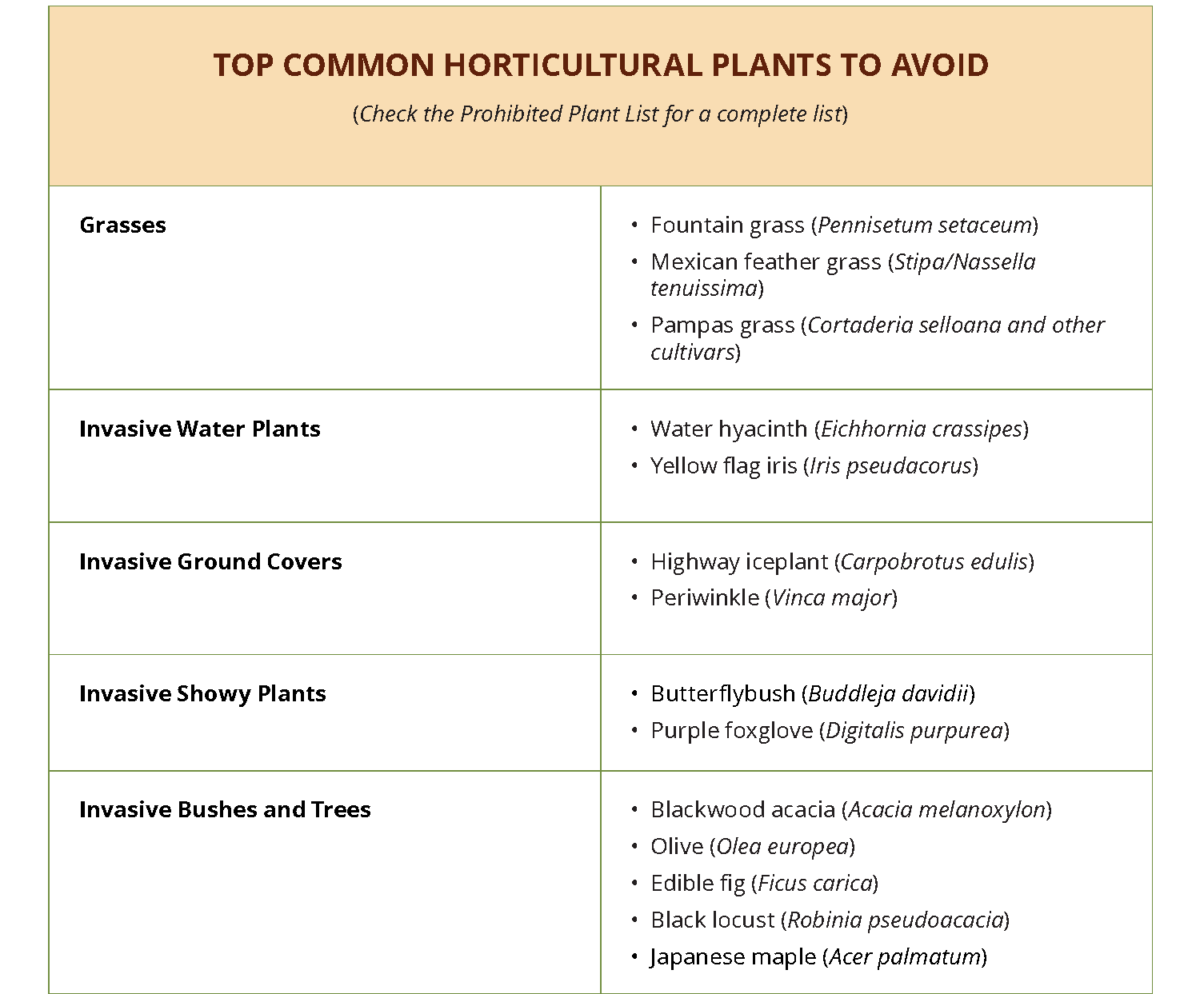Vegetation Management
Managing your property in this protected landscape takes proper planning and care. Activities like mowing, tree pruning, removing invasive plants, and planting natives should be done during the appropriate seasons and should take into consideration the complex life cycles of native plants and wildlife. We have compiled this list of vegetation management guidelines for Preserve landowners to implement in their Homelands. To manage your Openlands, please contact the Conservancy for an Openlands Stewardship Plan.
Contents
Mowing
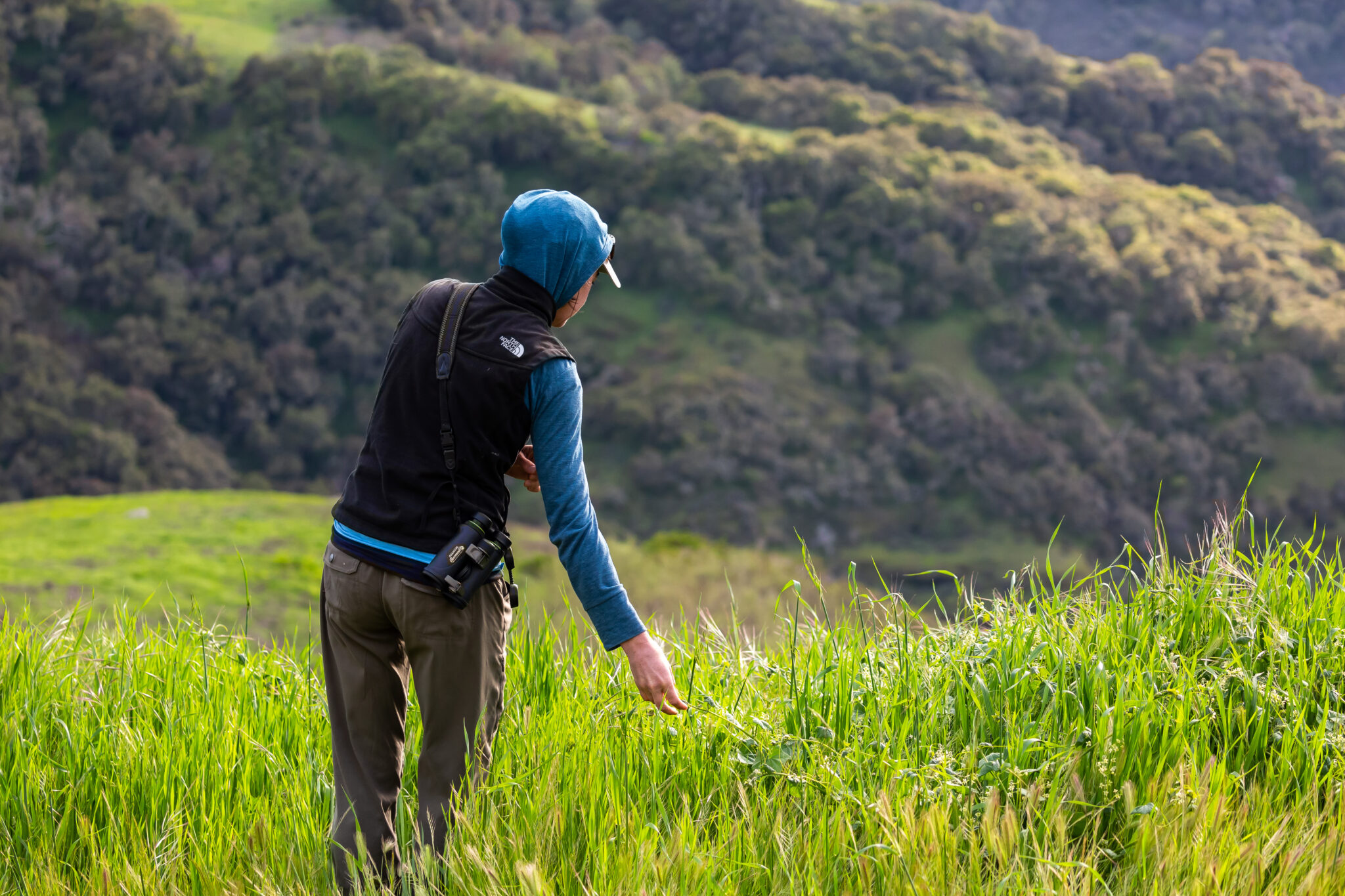
The Preserve’s grasslands are a special resource and are protected in the Openlands. Grasslands provide food and shelter for many species of insects, reptiles, birds, and small mammals that are not always able to escape the blades of mowers. In addition, native grasses and wildflowers will self-propagate if allowed to mature and cast their seeds. Mowing of the Openlands is permitted only if it is prescribed in a Preserve landowner’s Fuel Management Plan (FMP) or Openlands Stewardship Plan (OSP) for fuel or invasive plant management.
Below are guidelines to help Preserve landowners determine the condition of their grasslands. When in doubt, contact the Conservancy’s Restoration Program Manager, Breanna Rodgers, for further information or to develop a complimentary Openlands Stewardship Plan.
- Wait to mow until wildflowers have produced and cast their seeds, typically after July 1. If you mow too early, you could reduce the abundance of wildflowers on your property.
- If you hear songbirds in your grasslands in the spring, grassland nesting birds are likely reproducing. Wait to mow until the nestlings have fledged.
- If you have thistles and other invasive plants, a good way to prevent them from spreading their seed is to spot-mow with a weed whacker when their stems begin to elongate.
- If you have arranged for the Conservation Grazing Program to bring cows to your property, contact Claudio Nuñez to determine when the herd will arrive; wait to mow until after the cows move on.
Landowners with an Openlands Stewardship Plan or Fuel Management Plan who wish to have Community Services District personnel mow their Openlands are encouraged to coordinate those arrangements with Conservancy Stewardship Manager Andrew Nguyen.
Thanks to these partnerships between Preserve landowners and the Conservancy, we can fulfill our obligation to balance fuel management and biodiversity conservation in this amazing place we all call home.
Pruning Trees
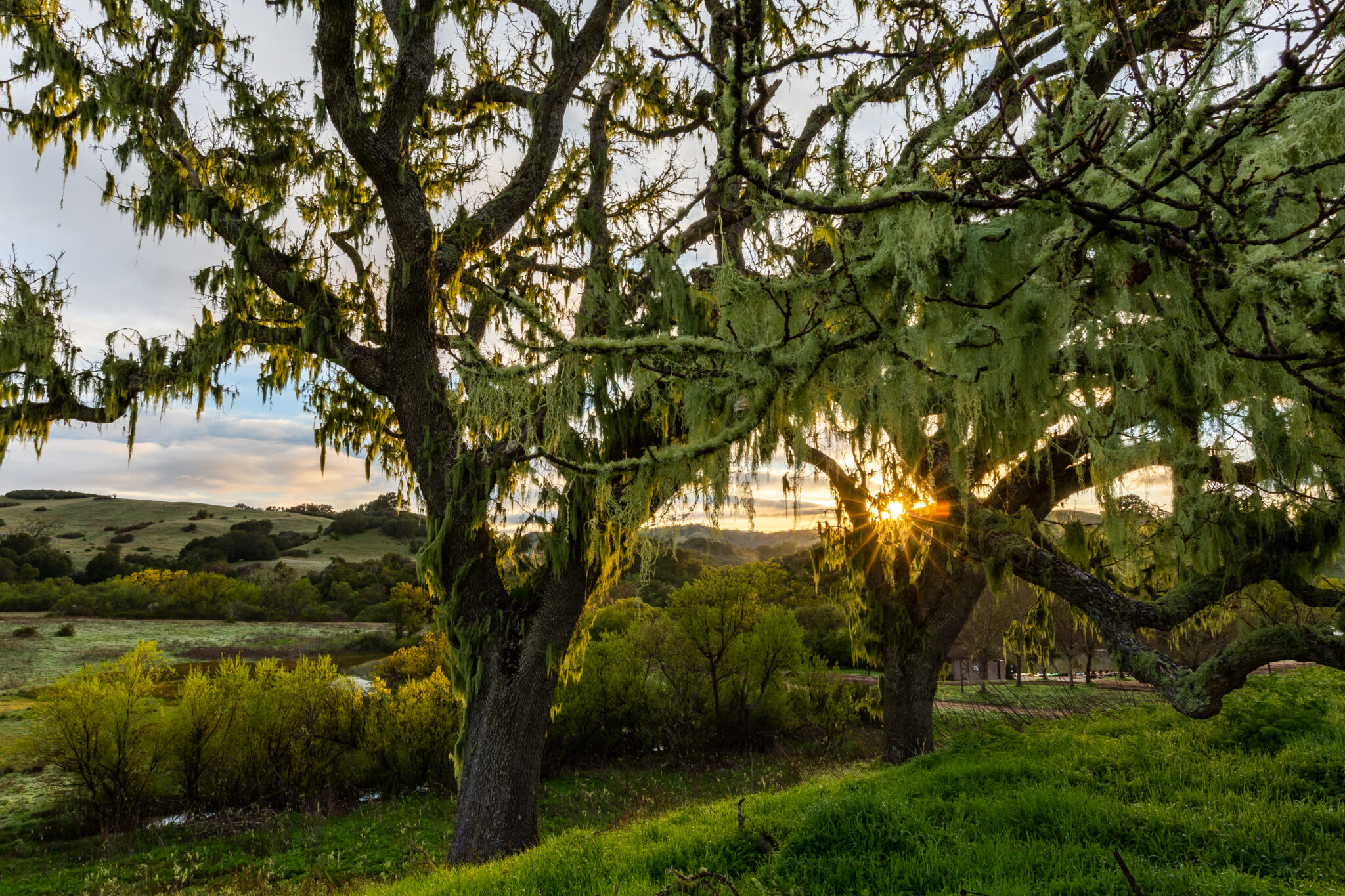
In Monterey County, native tree protections regulate significant pruning, and any pruning that removes more than 30% of the canopy requires a permit. Removing canopy can impact the tree’s ability to conduct photosynthesis and reduces wildlife habitat. The top of a tree should not be trimmed. Instead, pruning should occur from the bottom up or to create space between the canopy and any structures.
When to Prune
The risk of fungal pathogens and pests to tree communities can be managed by scheduling treatments during the appropriate season, and ensuring that cuts are clean. The Conservancy recommends pruning live trees when they are dormant from November to March. This avoids impacting trees during the growth cycle or when they may be vulnerable. Dead wood can be removed from the Homeland at any time of the year.
What is the process of removing trees in the Homeland?
In the Homeland, tree removal may occur in coordination with the development of your lot or if a tree is visibly dead or is deemed hazardous. If the tree is alive, an assessment by a licensed arborist or forester is required unless the tree poses an immediate threat to a road or residence. If you receive approval to remove a native tree, you will be required to plant replacement trees at a rate determined by the species and size of the tree removed. All requests for tree removal must be reviewed by the Conservancy’s Stewardship Department.
What is the process of removing trees in the Openlands?
The Conservancy will consider removal of trees that pose a hazard to roads or structures, may spread pathogens or pests to adjacent trees, or are a concern for fuel management. Felled trees should remain onsite in the Openlands. As part of their protection, the Openlands are managed to preserve habitat. Even in death, a tree remains full of life as it continues to provide shelter and nutrients to many species. Learn more about dead trees, or “tree snags” here.
Removing Invasive Plants
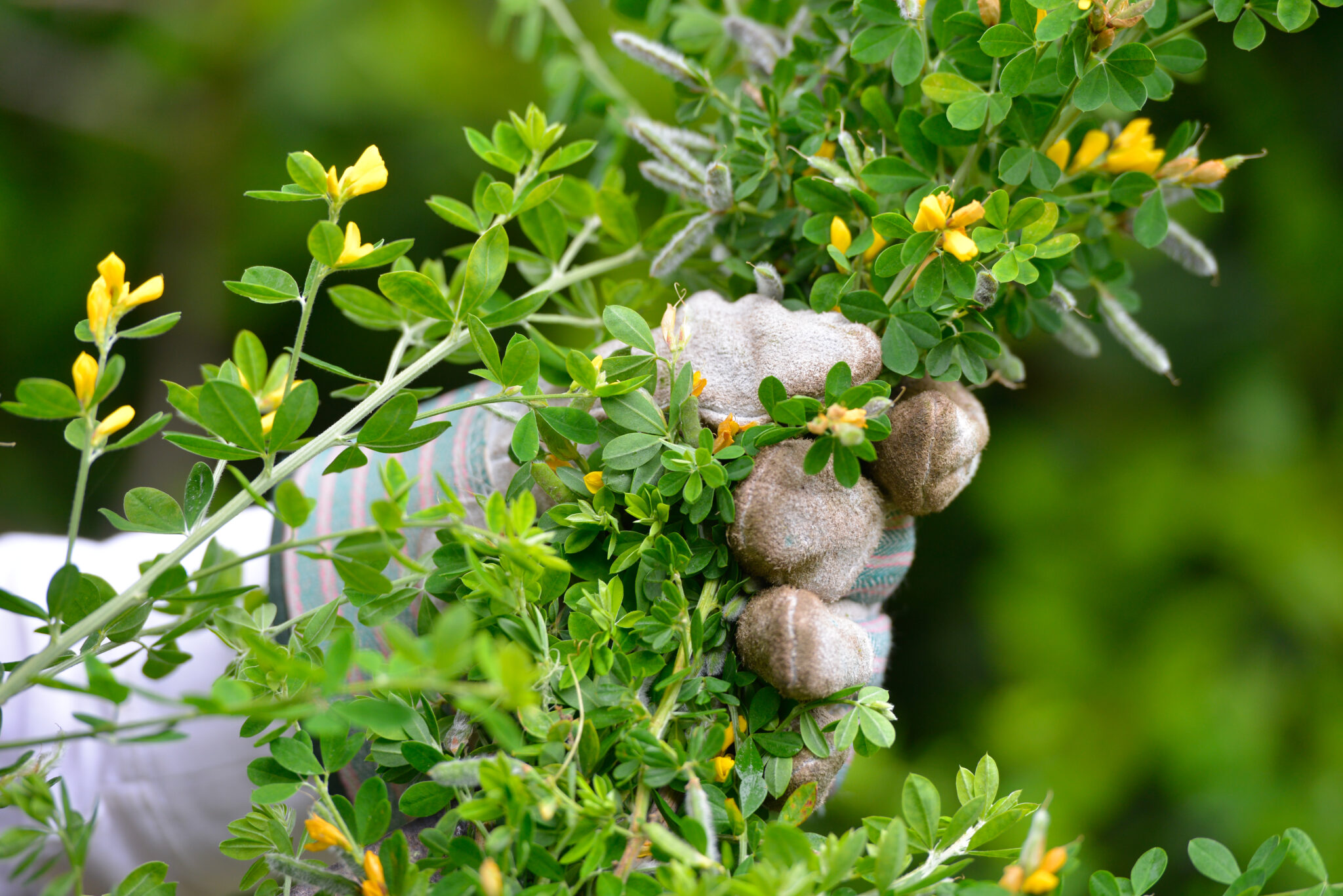
Invasive plants are non-native plants that opportunistically out-compete native species and reduce biodiversity. Left unchecked, invasive plants threaten wildlife by diminishing natural habitats and are more susceptible to wildfire. The Conservancy follows guidance from the California Invasive Plant Council (CAL-IPC) for managing weeds on The Preserve.
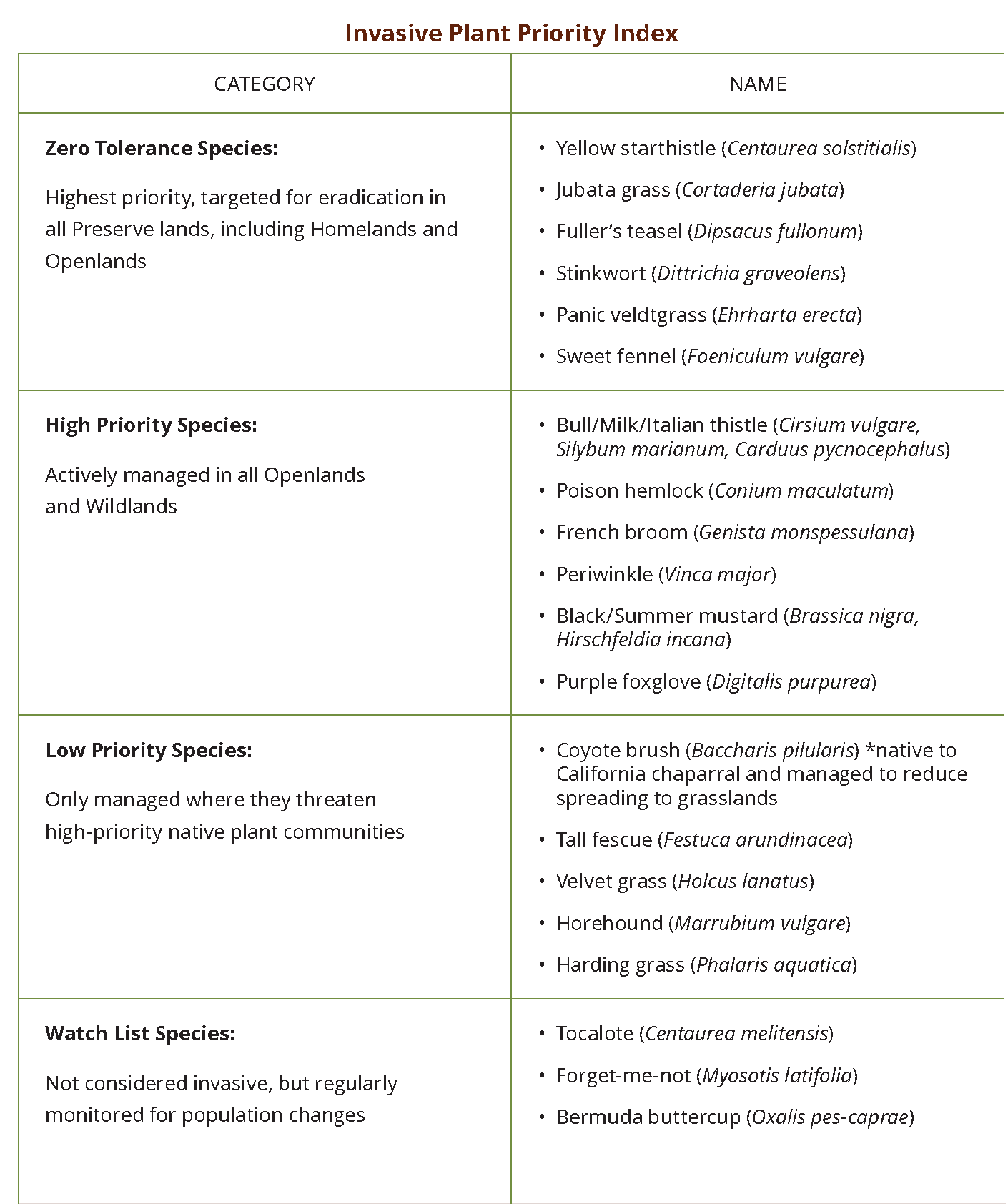
How can I prevent invasive plants from spreading on The Preserve?
You can help limit the spread of invasives by asking your contractors to decontaminate all equipment before they use it on your property and limiting areas of disturbance. Invasive plants will aggressively establish in areas that have been denuded of vegetation due to parking, grading, or mowing to bare soil. You should also clean the socks and shoes you use to hike in other lands before walking on The Preserve to prevent invasive seeds from “hitch-hiking” in.
Invasive plants have established on my property. What should I do?
Contact the Conservancy to request an Openlands Stewardship Plan (OSP) to address invasive plants on your property. Keep in mind that invasive plant management is a marathon, not a sprint. You may not see the positive impacts of weed management for the first few seasons because the plants have accumulated a seed bank in the soil over the years. However, each year that you manage invasive plants on your property, you are preventing the seed bank from increasing. With patience, the benefits of your commitment will become evident.
When is the best time to manage invasive plants?
Managing invasive plants is a strategic activity. The optimal time for their removal is during the energy-intensive period of flower-production before seeds are produced. However, there are effective treatments that can be applied at different stages in the plant’s life cycle. Since different species emerge and mature at different times of the year, it is recommended that you work with the Conservancy to create and implement an Openlands Management Plan.
There are three main treatments we use on The Preserve to manage invasive plants:
- Hand Removal: The most effective treatment method with minimal disturbance to surrounding plant communities; always prioritized.
- Spot Mowing: For large infestations that are more advanced and closer to producing seeds.
- Targeted Herbicide Treatment: For large infestations that are best targeted earlier in their growth cycle. The herbicides we use are endorsed by the University of California and are administered as spot treatments to minimize exposure to the surrounding flora and fauna.
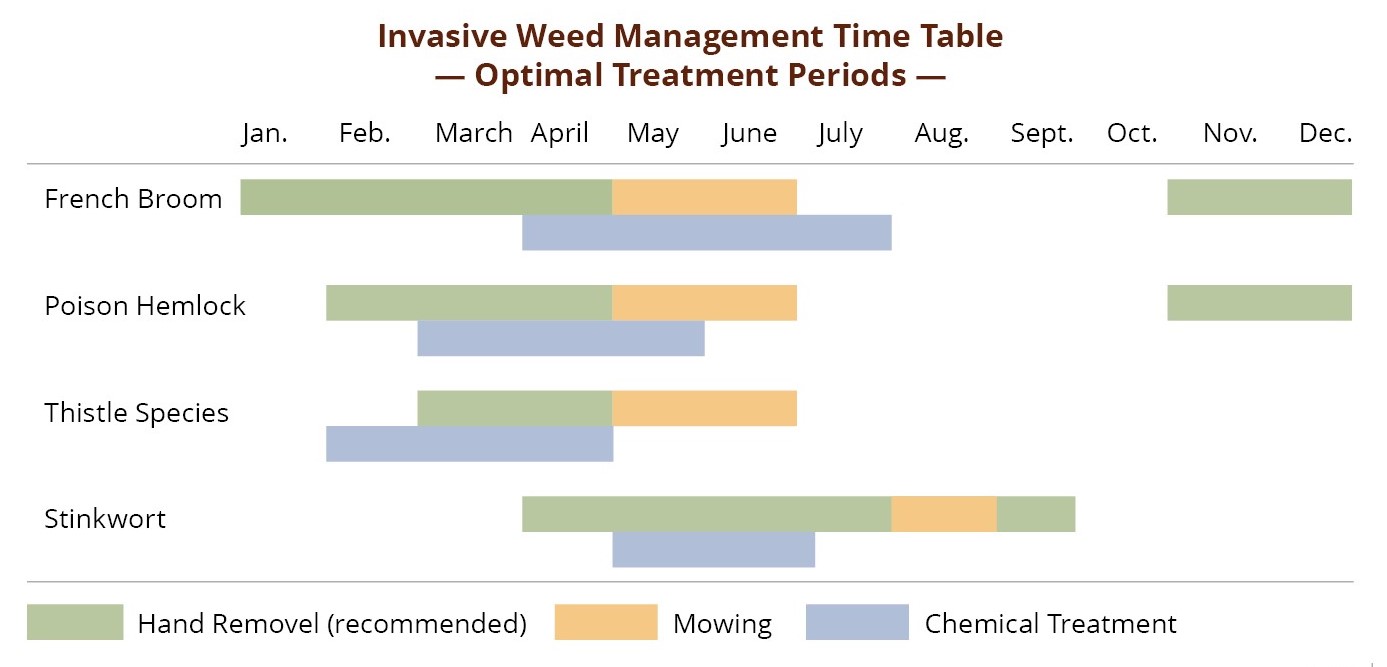
Over the course of a season, two or more treatment methods may be applied to a target invasive plant population, depending on factors such as weather and the life cycle stage of that plant. Though re-treating increases the likelihood of reducing the population, it does not typically result in 100% elimination. In most cases, you need to return to the same location the following year to treat the remaining population. Year after year, with continued effort, our goal is to exhaust the seed bank and eradicate the population.
Landscaping with Native Plants
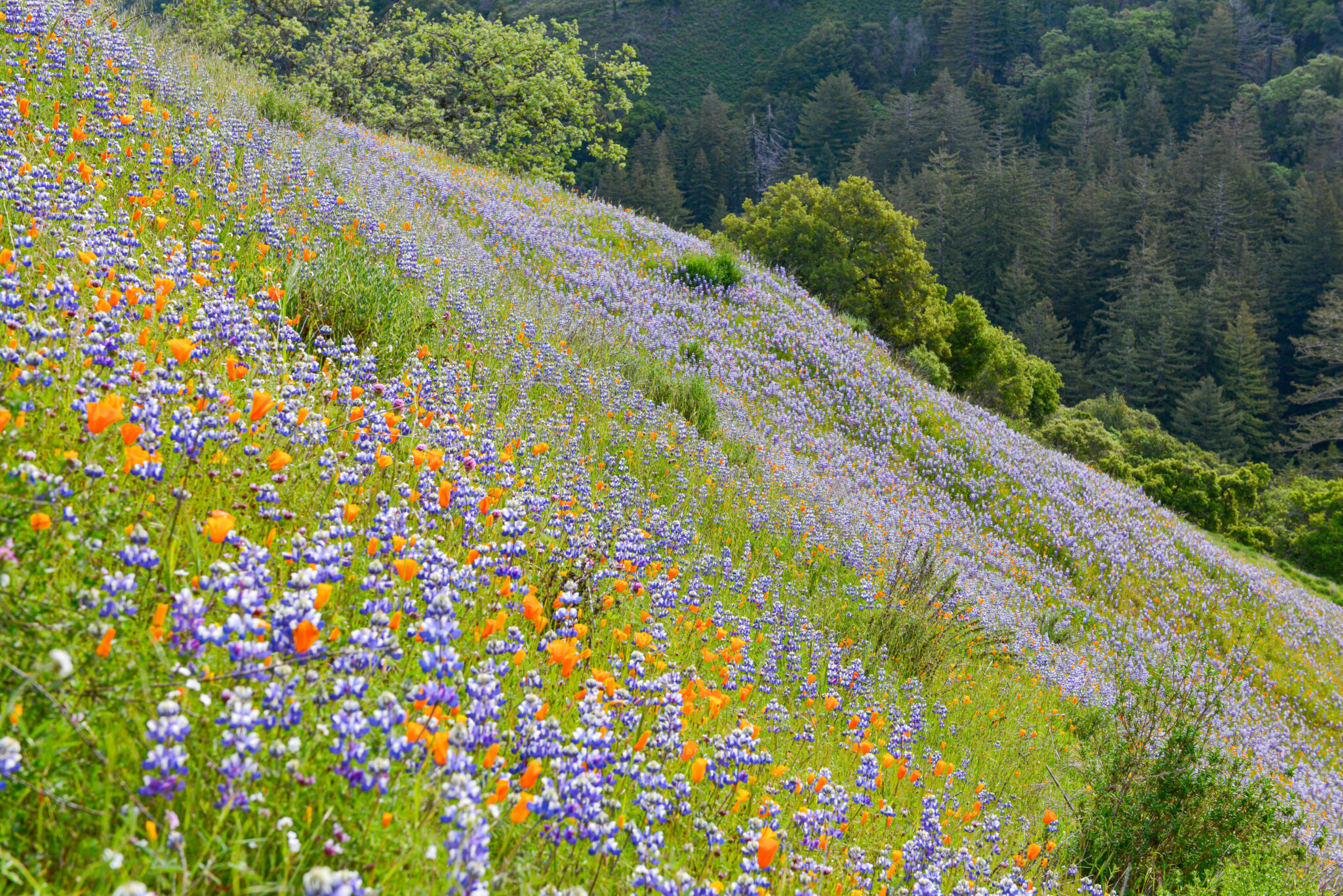
Landscaping with native plants on your property is a powerful way to protect the habitats you love, increase the natural beauty of your land, bolster surrounding plant communities, and provide defense against invasive plants.
Planting Native Species
A form of low-impact gardening that enhances the land, planting with native species that have evolved to work within their ecosystems means that they will not require as much irrigation or care. The species we recommend planting in your Homeland on The Preserve will depend largely on the habitat you reside in: grassland and oak savanna, coastal scrub and chaparral, oak woodland, redwood forest, wetland, or riparian zone. Determining which native species to plant requires a deep knowledge of which flora existed before the introduction of non-native species and which plants are located there now. To understand the species that thrive in each habitat type, please check out this resource. For a more complete list of native plant options, please download our Preferred Plant List.
Restoring Native Grasses & Wildflowers
The abundance of native grasses and wildflowers on The Preserve is special as this habitat has declined statewide. The Conservancy partners with a native seed distributor, Pacific Coast Seed, to provide a Preserve-specific blend of native grasses and wildflowers that can be used on your property. This blend is specially crafted with seeds sourced from Monterey, Santa Cruz, and San Benito counties. By selecting seeds from locations close to The Preserve, we are doing our part to retain the genetic integrity of our local species. The mix is updated from time to time, reflecting the stock of seeds available from year to year. The seed blend may also contain wildflowers, if you desire a more colorful springtime display.
Prohibited Plants
To avoid introducing plants with invasive potential—some of which are available at local nurseries—we request that you check the Prohibited Plant List first. Working with native plant vendors, you can find many options that are beneficial for wildlife and meet your landscaping goals.
